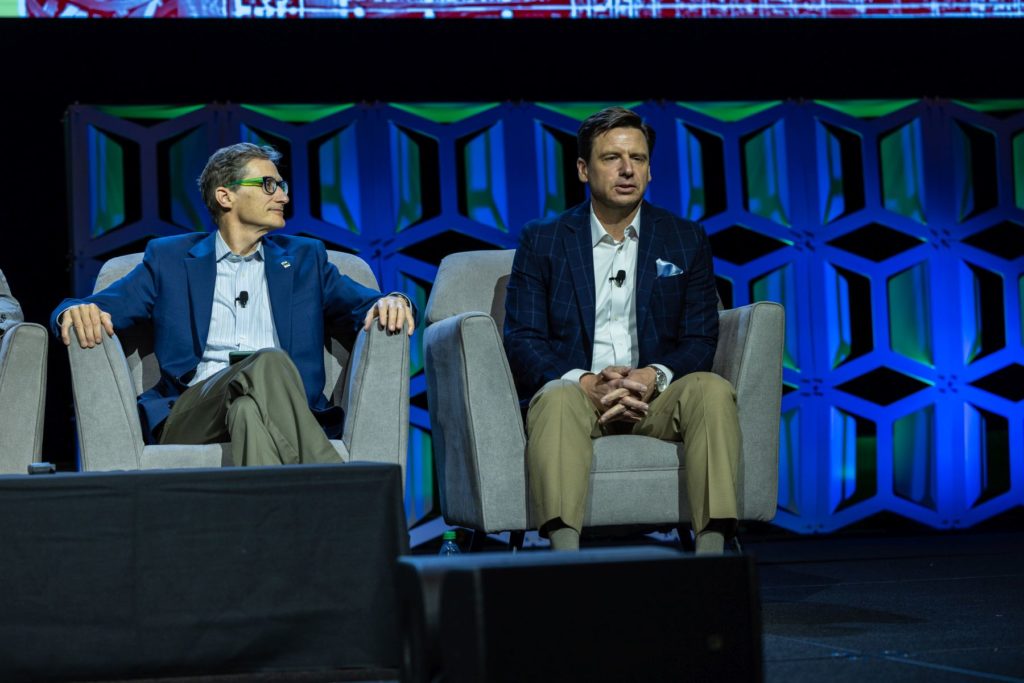Environmental justice has been gaining momentum over the past few years. Recently, the Biden administration announced new environmental justice actions that will make environmental justice a central mission of federal agencies, with the Environmental Protection Agency (EPA) leading the charge.
The ISRI2023 session, Environmental Justice, and Community Impact, moderated by Brandi Harleaux, CEO of South Post Oak Recycling Center, brought together representatives from the EPA, state regulators and the recycled materials industry to provide insights and takeaways for ISRI members on how to take the lead with environmental justice.
EPA
Lilian Sotolongo Dorka, deputy assistant administrator for civil rights for the Office of Environmental Justice and External Civil Rights at the EPA, gave context to the federal regulations. In 1992, EPA established an environmental justice office, and since then, presidents have been issuing executive orders for all federal government agencies to consider environmental justice in their decisions.
Last year, the Office of Environmental Justice and Civil Rights was created with the goal to raise it to the same level as other EPA offices. “EPA originally had three corner stones: ollow the science, follow the law and be transparent. Now we have a fourth: justice and equity,” said Dorka. She stated that environmental justice is a moral question as it raises the quality of life for everyone in the same vein as the Americans with Disabilities Act. It is also a legal matter as executive orders from the administration require the EPA to make laws with environmental justice in mind, similar to Title VI of Civil Rights Act, which prohibits discrimination on the basis of race, color, or national origin in any program or activity that receives Federal funds or other Federal financial assistance.
Dorka mentioned that there was a bit of a disconnect when communicating with the industry, “We haven’t had a lot of interaction with industry directly. As EPA goes out and talks to state entities, states ask that the recycled materials industry be brought in earlier, which is great.”

Lilian Sotolongo Dorka Deputy Assistant Administrator for Civil Rights for the Office of Environmental Justice and External Civil Rights at the EPA
The States
Ben Grumbles, executive director at The Environmental Council of the States, provided the states’ perspective on how they implement federal regulations. “Over 95 percent of environmental laws are passed and implemented by the states,” said Grumbles.
Grumbles made the case for getting to know your community to counteract any negative images or misgivings people might have about your facility. He recommends holding meetings, educational forums and once you have that trust, both you and community representatives should approach the state as a unified group. “Engage with state regulators to understand what is legally required and do it.”
Recycled Materials Industry
Andrew Cooley, senior vice president of strategy & business development at EMR USA, provided a proactive industry prospective. One of Cooley’s tasks at EMR is to strategize how to best approach environmental justice. “It started as unwelcome regulation but turned into a hidden blessing, giving EMR the opportunity to take charge on environmental justice,” said Cooley. EMR is one of the first companies to create environmental justice policies since their facilities in New Jersey were impacted by new laws.
New Jersey is the first state to pass an environmental justice law, the Environmental Justice and Cumulative Impacts, in 2020 and on April 17 of this year the New Jersey Department of Environmental Protection (NJDEP) finalized and published the corresponding regulations that finally enable the law to be fully enforceable. This means that the NJDEP must take into account not just the specific impact of a particular project or facility, but also the cumulative impact of other facilities and stressors in the community. The state is required to provide meaningful opportunities for public participation in the decision-making process and can provide communities technical assistance. This means that impacted communities have a seat at the table when permit decisions are being made about certain types of facilities that could negatively impact their health and well-being.
EMR approached this by being self-regulating and transparent. They:
- Built out an environmental, social and governance program.
- Know and keep track of all their emissions.
- Improve their carbon footprint by following the latest scientific date.
Cooley stated that the most important thing they have done is build trust with their community. They have conducted educational sessions with community stakeholders and started a foundation to find out what the needs of the community are, in order to give back in a specific way. EMR is using New Jersey as a blueprint to implement at their other facilities.

Ben Grumbles Executive Director at The Environmental Council of the States (Left) and Andrew Cooley, Senior Vice President of Strategy & Business Development at EMR USA (Right).
Speaker Suggestions
Progress moves at the speed of trust. To speed this up, embrace transparency. Make sure to know your emissions, keep track of the current science on emissions and be self-regulating; create your own standard to show regulators that you are proactive.
Know your community. Build trust by holding meetings and educational sessions. Make sure your community sees the value and benefit of your facility. Your community might not know you’re handling and processing recycled materials.
Reach out to zoning authorities as you build community relations. Never forget that you also represent your community. A healthy relationship between your facility and the people that work and live around it will ensure that new regulations benefit everyone.










